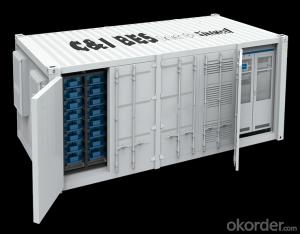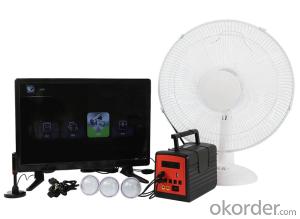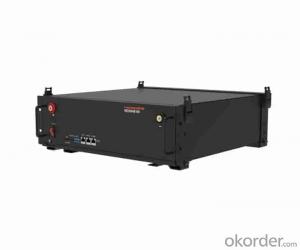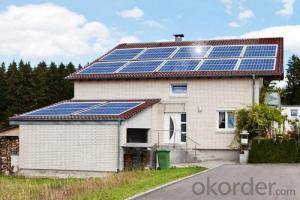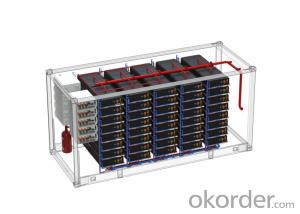4000w Solar Inverter
4000w Solar Inverter Related Searches
Best Solar Inverter For Home Power Inverter For Solar Panel Solar System Inverter For Home Solar Power Inverter For Home Best Solar Inverter For Rv Solar Power Inverter For House Inverter For 100w Solar Panel Solar Panel Inverter For Rv Inverter For 5kw Solar System Shade Cover For Solar InverterHot Searches
Inverter Size For Solar System Best China Solar Inverter Solar Inverter Supplier In Uae Solar Inverter In Dubai Solar Inverter In Saudi Arabia Solar Inverter In Uae Solar Inverter In Kerala Solar Inverter In Nepal Solar Inverter In Burpengary Solar Inverter In Caboolture Solar Inverter In Chennai Solar Inverter In Lebanon China 10kva Solar Inverter China Solar Inverter 1000kw China Solar Inverter 3kw China 5000w Solar Inverter China 850va Solar Inverter China Infini Solar Inverter Solar Inverter China Inverter Solar System Price4000w Solar Inverter Supplier & Manufacturer from China
Okorder.com is a professional 4000w Solar Inverter supplier & manufacturer, offers integrated one-stop services including real-time quoting and online cargo tracking. We are funded by CNBM Group, a Fortune 500 enterprise and the largest 4000w Solar Inverter firm in China.Hot Products
FAQ
- Yes, there can be risks of electrical grounding issues with solar energy systems. Improper grounding or lack of proper grounding can lead to electrical shocks, system malfunctions, and even fire hazards. It is crucial to ensure that solar panels, inverters, and other electrical components are correctly grounded to minimize these risks and ensure the safe and efficient operation of the system.
- Yes, solar energy systems can be used in areas with high levels of saltwater exposure. However, it is important to use materials and components that are specifically designed to withstand the corrosive effects of saltwater. This can include using corrosion-resistant coatings on solar panels, using stainless steel or marine-grade aluminum for mounting structures, and implementing proper maintenance and cleaning procedures to minimize the impact of salt buildup on the system.
- A solar thermal system is a technology that harnesses the energy from the sun to heat water or other fluids for various applications, such as domestic hot water, space heating, or even electricity generation. It typically consists of solar collectors, a heat transfer medium, and storage tanks, allowing for the conversion of sunlight into usable thermal energy.
- Yes, solar energy systems can definitely be used for powering water pumps in rural areas. Solar-powered water pumping systems are increasingly being used in remote areas where access to electricity is limited or expensive. These systems use solar panels to capture sunlight and convert it into electricity, which is then used to power the water pumps. This sustainable and renewable energy solution is cost-effective, environmentally friendly, and can provide a reliable source of water for agricultural, domestic, and irrigation purposes in rural communities.
- Solar energy systems can be used in all climates to some extent, but their efficiency and effectiveness may vary. While solar panels can generate electricity even in colder climates, they may produce less energy compared to sunnier regions. Additionally, extreme weather conditions like heavy snowfall or frequent cloud cover can temporarily reduce solar energy production. However, advancements in solar technology, such as the use of dual-axis tracking systems, can help optimize energy generation in different climates.
- Yes, solar energy systems can certainly be used to power hospitals or healthcare facilities. In fact, many healthcare institutions around the world are already utilizing solar power as a sustainable and reliable source of electricity. Solar energy systems consist of photovoltaic (PV) panels that convert sunlight into electricity, which can be used to power various equipment and appliances within the facility. There are several advantages of using solar energy in healthcare facilities. Firstly, it helps reduce operational costs by providing a long-term and sustainable source of electricity. Hospitals and healthcare facilities require a significant amount of energy to operate medical equipment, lighting, heating, cooling, and other essential systems. By installing solar panels, these institutions can significantly lower their electricity bills and allocate their resources towards patient care. Secondly, solar energy systems contribute to environmental sustainability. Hospitals are known for their high energy consumption, and traditional energy sources often lead to increased carbon emissions and pollution. By switching to solar power, healthcare facilities can reduce their carbon footprint and promote a greener and healthier environment. This aligns with the healthcare industry's commitment to promoting public health and wellbeing. Moreover, solar energy systems can provide a reliable source of electricity, even during power outages or during emergencies. Hospitals and healthcare facilities require uninterrupted power supply to ensure the safety and wellbeing of patients. Solar energy systems can be integrated with battery storage solutions, allowing for the storage of excess electricity generated during the day for use during nighttime or when the sun is not shining. This ensures continuous power supply, even during periods of grid outages or natural disasters. It is worth noting that the installation of solar energy systems requires careful planning and design to meet the specific energy needs of hospitals and healthcare facilities. A thorough assessment of energy requirements, space availability, and system capacity is essential to ensure optimal performance and efficiency. Additionally, regular maintenance and monitoring are crucial to ensure the smooth operation of the solar energy system. Overall, solar energy systems offer numerous benefits for hospitals and healthcare facilities. They provide a cost-effective, sustainable, and reliable source of electricity, reduce carbon emissions, and contribute to the overall wellbeing of patients and the environment. As the healthcare industry continues to prioritize sustainability and environmental stewardship, the adoption of solar energy systems in powering hospitals is expected to increase.
- Certainly, greenhouses or nurseries can make use of solar energy systems. Solar energy, a source of power that is both renewable and sustainable, can be harnessed by employing solar panels. These panels convert sunlight into electricity, which can then be utilized to power various devices and systems within a greenhouse or nursery. Using solar energy in these environments presents several advantages. Primarily, it helps decrease dependence on non-renewable energy sources like fossil fuels that contribute to greenhouse gas emissions and climate change. By employing solar power, owners of greenhouses and nurseries can significantly lessen their carbon footprint and contribute to a cleaner and more environmentally friendly world. Solar energy systems are also economically efficient in the long term. While the initial installation costs may be higher compared to traditional energy sources, solar panels have a lengthy lifespan and require minimal maintenance. Once installed, they can generate electricity for decades, providing a dependable and consistent power source for the greenhouse or nursery. This can result in substantial energy savings over time, helping to offset the initial investment. Moreover, solar energy systems can be tailored to meet the specific energy demands of greenhouses and nurseries. These facilities often require a steady and trustworthy source of electricity for various functions, such as lighting, heating, ventilation, and irrigation systems. Solar panels can be positioned in a manner that maximizes energy production and ensures a continuous supply of power throughout the day, even during periods of low sunlight. In addition to powering the facility, solar energy systems can also store excess electricity in batteries. This stored energy can be utilized during overcast days or at night when sunlight is not available, ensuring an uninterrupted power supply to the greenhouse or nursery. All in all, solar energy systems offer a feasible and sustainable solution for powering greenhouses and nurseries. They provide environmental benefits, cost savings, and a reliable source of electricity, making them an appealing choice for those in the agricultural industry.
- Yes, there are risks of electrical shocks during the installation or maintenance of solar energy systems. These risks can occur due to the high voltage of the system, improper grounding, faulty wiring, or inadequate safety precautions. It is crucial to follow proper safety procedures, use appropriate personal protective equipment, and ensure that qualified professionals handle the installation and maintenance to minimize the risk of electrical shocks.




































